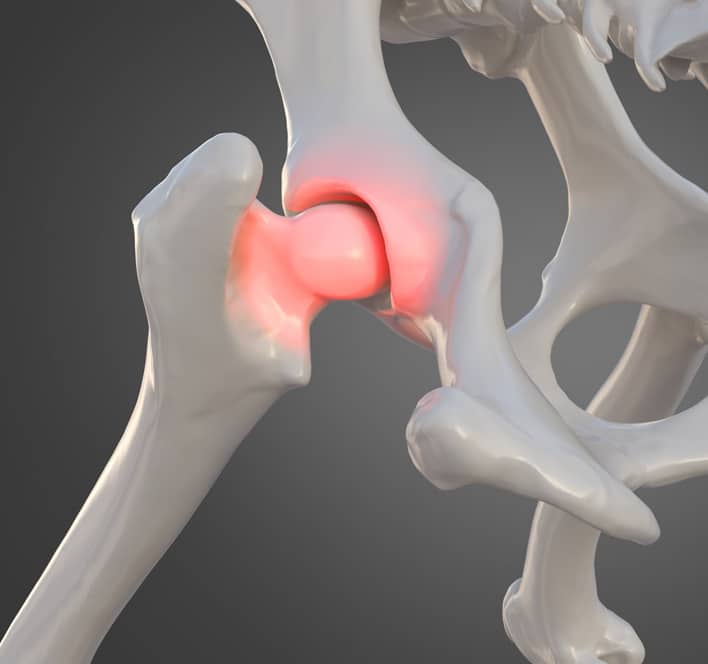Hip dysplasia is when the hip joint doesn’t develop properly. It’s a condition that can be recognized shortly after birth or later in life. However, the sooner it is diagnosed and treated, the better, as hip dysplasia is a progressive condition that worsens over time. As the disease progresses, the pain and mobility limitations worsen as someone ages, which is why early diagnosis and treatment options are crucial.
Not many people know that hip dysplasia can begin in utero, as symptoms often emerge later in life. Fortunately, advanced screening methods and treatment options for hip dysplasia have greatly improved. Vigilant early detection and more accurate diagnostics have resulted in effective interventions to avoid more severe problems. Our board-certified surgeons at NJ Spine & Orthopedic are skilled in the latest minimally invasive techniques to help relieve your hip dysplasia discomfort and pain.
A Quick Overview of Hip Dysplasia
Hip dysplasia is the medical term for when the hip socket doesn’t fully cover the ball portion of the upper thighbone. As a result, the hip joint becomes partially or completely dislocated. Most people with hip dysplasia are born with this condition. Doctors will check babies for early signs of hip dysplasia shortly after birth and during well-baby appointments. When hip dysplasia is diagnosed in early infancy, the child will likely be recommended to wear a soft brace that typically corrects the problem.
Milder cases of hip dysplasia may not develop symptoms until the child is a teenager or in adulthood. Hip dysplasia can damage the cartilage lining joints and can hurt the soft cartilage that rims the socket protection of the hip joint—called a hip labral tear. As the child ages into a young adult, they may need surgery to move the bones into their proper position for smoother joint movement.
Diagnosing of Hip Dysplasia
Diagnosing symptomatic hip dysplasia is done through an examination of the patient’s medical history, a physical examination, and an X-Ray evaluation. Sometimes other types of medical imaging (MRA, CT) may be required to ensure an accurate diagnosis.
Hip dysplasia can occur in people of all ages. While most who were diagnosed with hip dysplasia as infants or children have already undergone some type of treatment, sometimes remaining deformities may cause symptoms to resurface and require more treatment.
Symptoms of Hip Dysplasia
Due to the inadequate coverage of the femoral head, the weight supported by the hip is distributed to smaller surfaces, creating an excessive load along the rim of the hip socket. Over time, this added weight causes joint cartilage to degenerate, leading to arthritis. Some common symptoms experienced as a result of hip dysplasia include:
- Pain in the side of the hip or groin
- A sensation of “popping” with activity
- Worsening pain when sitting, walking, or running
- Limping
- Increased difficulty with strenuous activities
Symptoms and signs of hip dysplasia may vary by age group. Therefore, it’s important to consult a healthcare professional to determine whether you or your child needs treatment for hip dysplasia.
Suffering From Hip Dysplasia? Contact NJ Spine & Orthopedic Today
The hip supports most of the upper body’s weight and enables the body a wide range of movement. However, when a person suffers from hip dysplasia, the ball of the femur doesn’t fit securely into the socket leading to immense pain and discomfort and possible worsening conditions.
At NJ Spine & Orthopedic, we offer the least in research, technology, and treatment to help our patients find pain relief and regain their quality of life. Chronic pain doesn’t just make physical activities challenging; it impacts a person’s mental and emotional health. The specialists at NJ Spine & Orthopedic are committed to helping our patients find the best and most suitable treatment. Schedule an appointment today by completing our contact form or calling (866) 553-0612.

